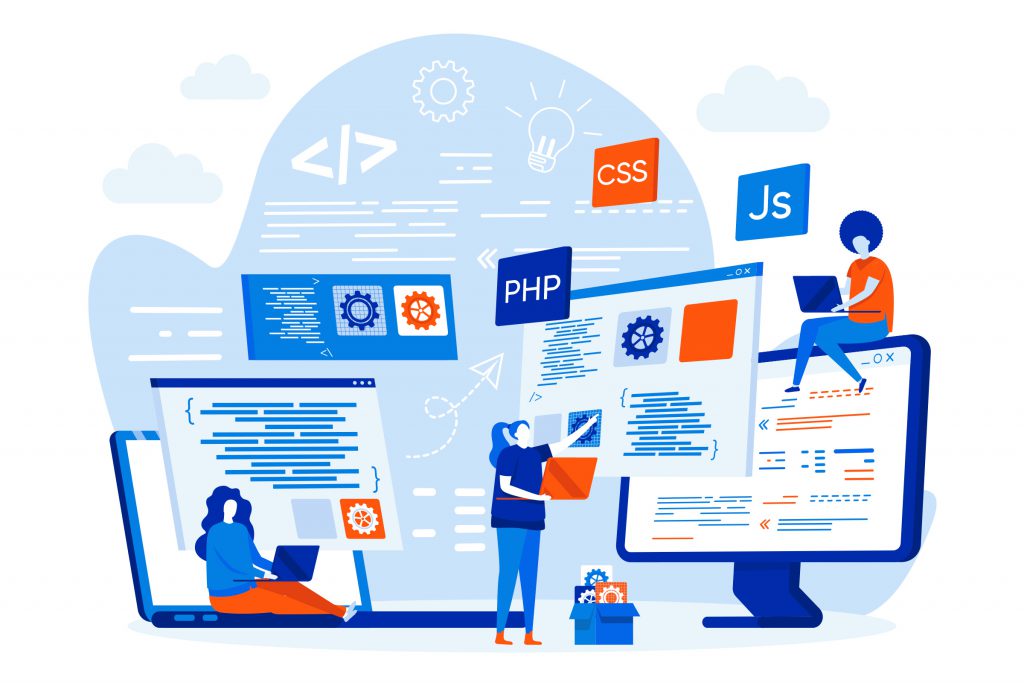As you prepare to develop a website or an application for your business or institution, you’ll encounter many technical terms most of which you have to be conversant with because they refer to the core elements of website or app development. For instance, you need to be familiar with front-end and back-end development processes because they encompass the two major parts of all websites and apps.
What Is Front-End Development?
Front-end development is the process of creating the part of a website or app that’s visible to the end user. This part of the website is commonly referred to as the user interface (UI) or the client side. It includes everything that’s directly accessible to the user, including texts, images, colors, buttons, and navigation menus.
For instance, if you’re developing a site or app for your restaurant, its front-end will include various design elements, such as photos of your restaurant and meals, your contact details, and the navigation menu with all the necessary buttons. The front-end of your site or app must be attractive and in tandem with your brand’s overall image.
Therefore, you have to hire a qualified and experienced developer to create a UI that delivers the best user experience (UX). Your developer must be familiar with all the necessary front-end development tools, frameworks, programming languages, and software to ensure that the UI works perfectly and responsively.
Fortunately, you can find reliable and experienced freelance front-end developers on reliable freelancing sites like Guru. These developers are thoroughly vetted to ensure they’ve got what it takes to handle all aspects of any front-end development projects.
What Is Back-End Development?
In software development, back-end development refers to the process of writing the code that serves as the foundation of the website or application. Also referred to as server-side, the back-end part of a site or app is the back-side of the platform that is not visible to the end user. It can only be accessed by authorized persons like admins and developers.
Back-end development entails writing code that allows the end user to interact directly with your website and perform important functions like processing data. This part of platform development can’t be seen but enables the platform to function quickly and responsively.
You need to hire a back-end developer who knows how to write code that easily communicates with the database to add, process, modify, and remove data. Common examples of database-integrated platforms include e-commerce sites, social media platforms, and blogs.
Your freelancer must be well-versed with the necessary tools, frameworks, software, and coding languages used by experienced back-end developers. Take your time to analyze their skills and experience to avoid disappointment.
Are Front-End and Back-End Development Necessary for All Sites?
As discussed above, front-end and back-end development processes are necessary for any online platform because they determine the overall appearance and functionality of the site or app.
Without front-end development, your website won’t have necessary design elements like navigation menus, buttons, text, and images. These elements define your brand because they form part of what your customers interact with directly, so you have to find an experienced front-end developer to create the exact design elements you need for your site.
Back-end development is also vital because it involves writing code that forms the basis upon which the entire site or app will be developed. It entails developing the server-side software that determines how promptly and responsively your platform functions.
A back-end developer will ensure that your platform performs correctly by focusing on the database, application programming interfaces (APIs), architecture, back-end logic, and servers. Your site needs code that enables browsers to communicate with your database so that they can add, process, update, and remove data. Back-end development also involves maintaining and debugging the code so that your platform functions properly all the time.
In short, front-end development uses coding languages that make your site look perfect and easy to navigate, while back-end development uses programming languages that hold together the front-end elements and keep the site running smoothly. Find your perfect freelance front- or back-end developer on Guru today!



